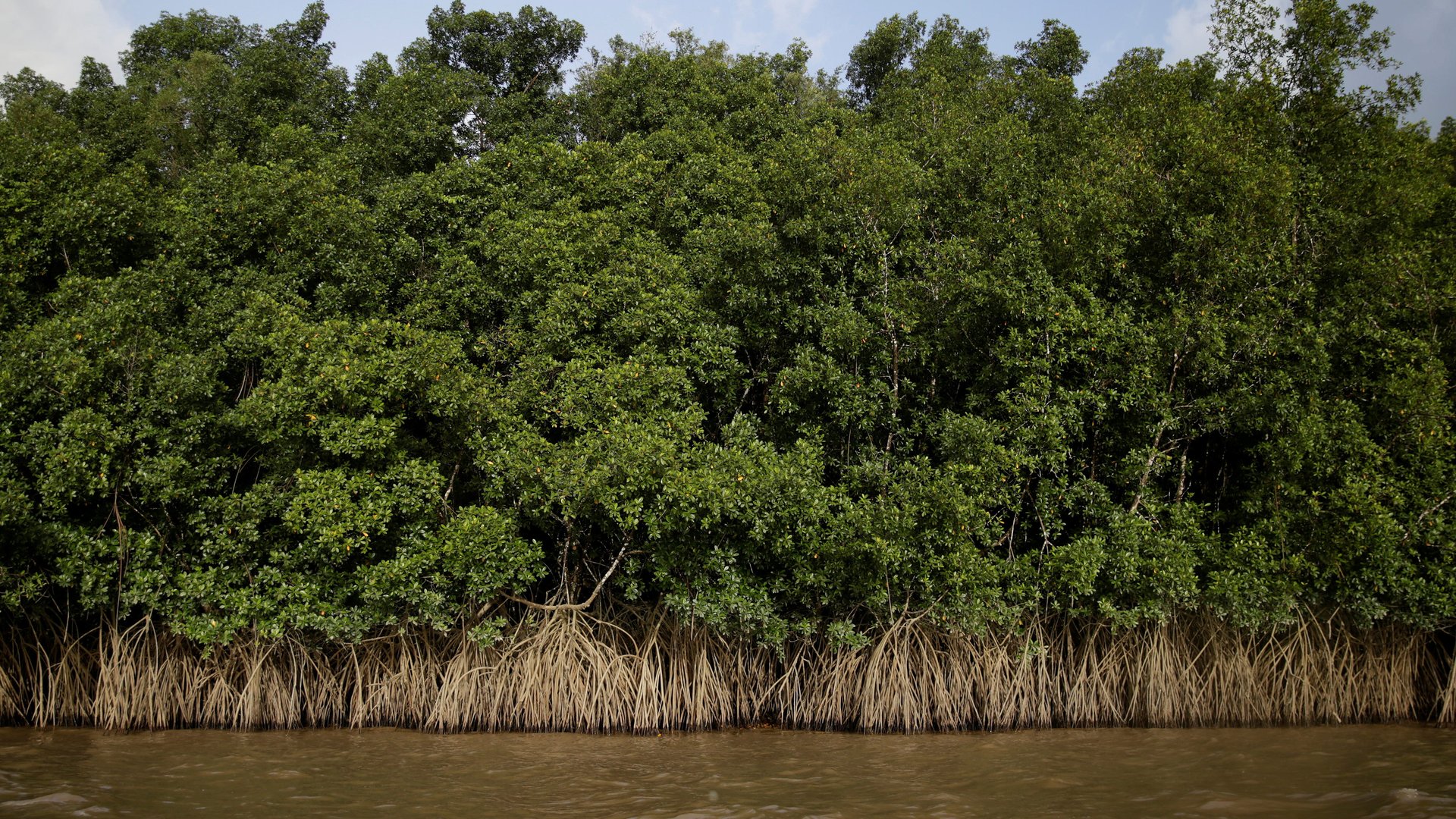Apple is investing in negative emissions
Apple’s newest smartphones may not have received all-round praise, but its latest environmental initiative surely should. On Friday (Sep. 14), the world’s most valuable public company said it is investing an undisclosed sum in a project in Colombia to restore mangroves and sequester as much as 17,000 metric tons (18,739 tons) of carbon dioxide in two years. That’s equal to the emissions that the fleet of vehicles updating Apple Maps will produce over the coming decade.


Apple’s newest smartphones may not have received all-round praise, but its latest environmental initiative surely should. On Friday (Sep. 14), the world’s most valuable public company said it is investing an undisclosed sum in a project in Colombia to restore mangroves and sequester as much as 17,000 metric tons (18,739 tons) of carbon dioxide in two years. That’s equal to the emissions that the fleet of vehicles updating Apple Maps will produce over the coming decade.
“Mangroves live at the edge of the land and sea, providing local communities with coastal protection, habitat for their fisheries, and a wealth of biodiversity,” according to Conservation International, an NGO that’s leading the mangrove restoration project. “These and other ocean wetlands store up to 10 times the carbon per unit area as terrestrial forests, making them a vital ally in the fight against climate change.” A 2016 study of 3,000 deforested mangrove patches found that most of them were being cut down for the use of growing rice, palm trees, or expanding fisheries.
Beyond cutting the amount of carbon dioxide we put into the atmosphere, scientists show that we will also need to pull carbon dioxide from the air to avoid catastrophic climate change. There are six so-called “negative-emissions technologies” that can help us get there: afforestation and reforestation; enhanced weathering (using minerals that capture carbon dioxide); soil carbon (tweaking the crops and forests we currently grow to absorb more carbon); biochar (using a special kind charcoal as to trap carbon dioxide); BECCS (bioenergy with carbon capture and storage, which requires capturing carbon dioxide produced by burning biomass like wood and then burying it underground); and DAC (direct air capture, which involves the use of machines that are essentially trees on steroids to suck carbon dioxide from the air and bury it underground).
Among those negative-emissions technologies, mangrove restoration would be classed as reforestation. The Conservation International project would cover an area of 17,000 hectares (42,000 acres) in the Sinu river delta. The NGO will use the money raised for the project to help the 12,000 people in the community who use the mangroves for food, firewood, and livelihoods. Conservation International believes the carbon offsets will provide financial security to the region and develop sustainable ways to support tourism and fisheries.
Earlier this year, Apple also announced that all of its electricity use in 45 countries is powered by 100% renewable energy. Some of the success of such environmental shifts are down to the lower cost of renewable energy, but much credit also goes to environmental campaigns like Greenpeace’s Click Clean that hold tech companies to account on their sustainability promises. That said, there’s still a long way to go if Apple plans to cut emissions from all its energy use.